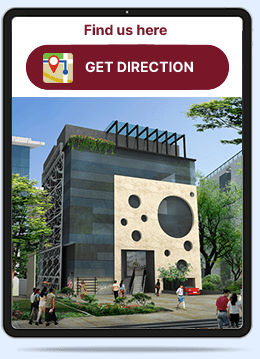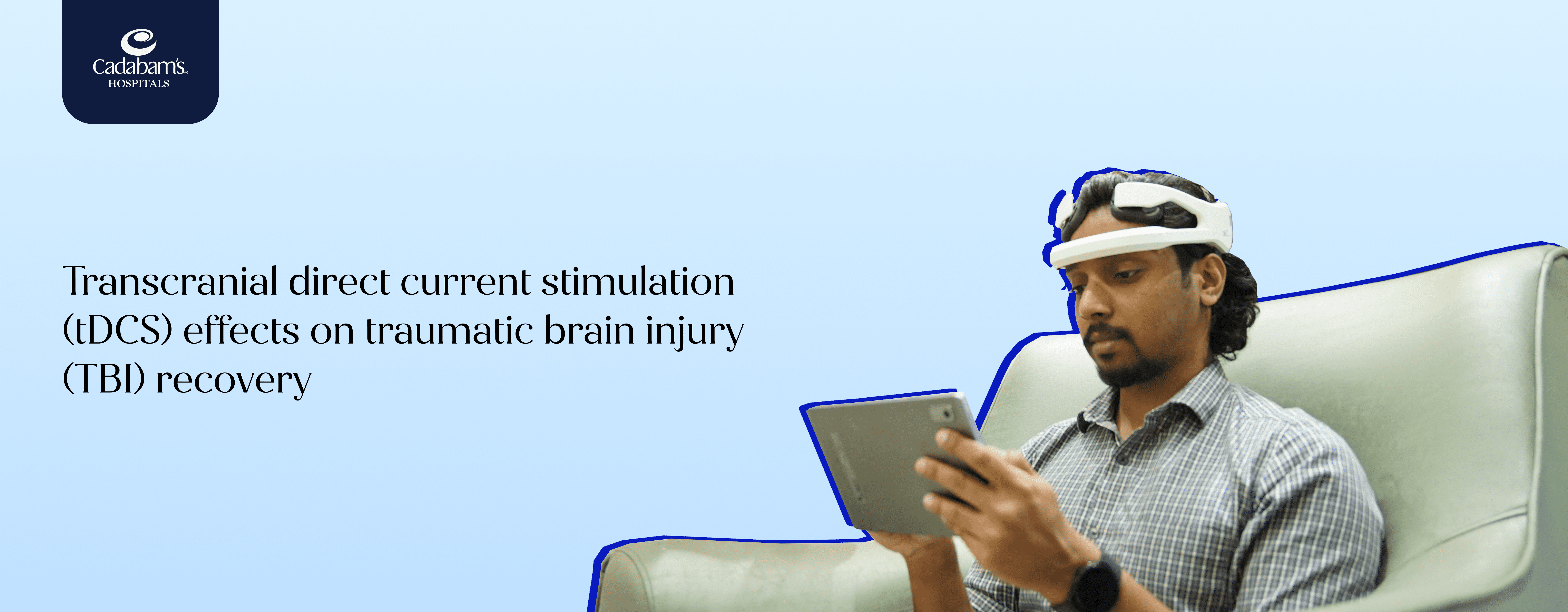Table of Content
Recovery from Traumatic Brain Injury (TBI) is difficult, and new technology is emerging that promotes rehabilitation with Transcranial Direct Current Stimulation (tDCS), a non-invasive form of technology being tested for the possible improvement of cognitive and motor recovery. Such a neurorehabilitation method has become increasingly relevant in discussions as it seeks to provide better insight into the functions of tDCS and its assistance to TBI patients.
What is Traumatic Brain Injury (TBI)?
Traumatic brain injury, in short, is the term used to describe a condition of head and brain dysfunction due to the effect of an external force that proceeds from a blow to the head, a jolt to the head, or penetration to the skull. The condition can be as mild as a concussion to the most severe brain functioning disruption leaving behind afflicted cognitive, physical, or emotional functions.
Diagnosis of TBI results from medical assessment through neuroimaging combined with cognitive assessments intended to determine the degree of injury.
Causes of TBI
TBI can be caused by various incidents including auto accidents, falls, sports injuries as well as assault. For some others, having bomb explosions only in the military as well can cause TBI. Any individual can undergo TBI; however, people who engage in contact sports, the elderly as well as individuals with hazardous working conditions have more chances of having TBI. The knowledge of these causes better equips in prevention.
Symptoms and Diagnosis of TBI
The symptoms of TBI run vary widely based on the grade of the injury. General symptoms generally include confusion, memory loss, headaches, and lack of ability to concentrate. Severe symptoms may include unconsciousness, motor functions, and altered behaviour or personality. Diagnosis applies imaging techniques such as CT scans or MRIs, along with neurological tests. The sooner that you can diagnose it, the sooner that treatment is applied, and it will be healthier.
Overview of Transcranial Direct Current Stimulation (tDCS)
Transcranial Direct Current Stimulation (tDCS) is a type of non-invasive brain stimulation technology that uses low electrical currents to modulate neuronal activity. This is primarily utilised in clinical settings to enhance cognitive and motor functions.
How tDCS Works
A small electrical current will pass through electrodes placed on the scalp during tDCS application. These currents will modify the firing of neurons, thereby increasing the chances of their activation or decreasing the chances of it. Either excitatory or sometimes inhibitory tDCS, depending on the polarity of the stimulation, is well-suited for affecting cognition and motor functions associated with damage to TBI.
tDCS Devices and Treatment Protocol
Typically, portable, compact units of tDCS consist of a power source, electrodes, and a control interface. In general, the treatment protocols for TBI include several sessions over weeks with an application of stimulation over 20-30 minutes per day. The intensity, duration, and placement of electrodes are modified based on symptoms and objectives at recovery.
Benefits of tDCS in the Rehabilitation of Traumatic Brain Injury (TBI) Patients
tDCS in TBI rehabilitation shows promise for improving cognitive function as well as the ability to enhance motor function or emotion. So, there has been a recent innovation in the remedial methods.
Cognitive Improvements and Attention Deficits
tDCS has demonstrated great efficacy in enhancing cognitive functions, especially those related to memory and attention. A common challenge for TBI patients involves deficits in attention, within which the potential of tDCS has been found in restoring the cognitive balance through enhancement of neural plasticity for better regeneration of mental sharpness for patients than by standard rehabilitation alone.
Enhancing Motor Recovery
Significant consequences of TBI include motor deficits, which may damage movement coordination and strength. tDCS can promote the recovery of patients with motor loss because it can stimulate the cortex responsible for the movement. The patients with motor deficits treated using tDCS along with physical therapy improved significantly more than those who received only one treatment.
Addressing Emotional and Psychological Challenges
tDCS has emerged as a potential agent for the treatment of mood disorders, anxiety, and symptoms of PTSD in patients suffering from TBI. The studies reported significant improvement in the mood status of patients during tDCS treatment and decreased their level of anxiety.
In this manner, tDCS works on the region of the brain pathophysiological related to emotional regulation to help overcome psychological challenges it poses in its vicinity, providing an interface in the form of a non-invasive method to uplift the feeling of well-being for patients undergoing the recovery process.
tDCS as a Complement to Physical Therapy
When combined with physical therapy, tDCS accelerates the rate of recovery of motor functions in a patient with TBI. When used simultaneously with conventional rehabilitation, it enhances coordination, strength, and speed of recovery. In this way, the administration combines elements of a more holistic treatment approach to maximise patient outcomes and return patients to functional independence faster.
Patient-Centric Approaches in tDCS Treatment
Personalised treatment protocols with tDCS ensure that everyone's needs and goals are targeted in recovery. Adjustments of the stimulation parameters according to the patient's needs as well as collaboration in deciding about their care can enhance a person's improvement through protocols under tDCS.
This interaction with patients would foster active engagement in the recovery process and, subsequently, better engagement together with more successful outcomes.
Improving Quality of Life and Daily Functioning
The major bases for the potential benefits of tDCS in terms of quality of life in TBI patients are based on enhanced cognitive and motor functions, which enable the performance of daily tasks. Improvement in a patient's ability to pay attention, their memory, and their motor skills allow for the facilitation of restoration of independence and increased participation in everyday affairs that could help toward normalcy and well-being during recovery.
Long-Term Effects and Sustainability of tDCS
The long-term consequences of tDCS lead to improved cognitive as well as motor functions after the end of treatment, although maintenance sessions or other therapies could be required to preserve these gains. A few reports on repeated sessions of tDCS with ongoing rehabilitation still indicate that consolidation and maintenance of the gain facilitate sustained recovery in TBI patients.
Challenges and Considerations for tDCS in TBI Recovery
Although much promise surrounds tDCS, several challenges still surround it, including individual variability in response as well as other safety concerns that must be addressed before its widespread use in TBI recovery.
Individual Variability in Response
There is still variability in the response of TBI patients undergoing tDCS, and factors such as the extent of injury severity, lesion location, and the patient's neurophysiology largely come into play. This variability necessitates the personalisation of treatment plans. Protocol tailoring is important because it ensures a customised plan to treat the needs of a patient, maximising possible outcomes as each has exclusive recovery needs.
Optimal Stimulation Parameters
This includes stimulation intensity, electrode placement, pulse width, frequency, and stimulus duration. Variables can sometimes affect the course of treatment or outcomes because of the differences in these parameters and reaction variability.
The ideal parameters of tDCS for patients with TBI remain one of the key challenges in rehabilitation. Parameters on current intensity, position of electrodes, session time, and treatment frequency are different and don't arrive at a standard process thus far. This calls for further research to come up with specific protocols that balance efficacy with safety for the patient in question.
Adverse Effects and Safety Concerns
While tDCS is safe, side effects such as headaches, skin irritation, or mood changes could be minimised if proper screening, ongoing monitoring, and informing the patients occur before treatment. Clear safety protocols in clinical practice are essential to avert complications and raise the level of patient confidence.
Limited Accessibility and Affordability
Accessibility to tDCS is stymied by the prohibitively high cost of treatment, by the lack of well-trained providers, and geographically, as some areas can be inaccessible. Many of the patients cannot afford this treatment; others live in areas where tDCS services are either unavailable or inaccessibly located.
Efforts toward solutions that incorporate telemedicine or community-based programs will facilitate access to necessary treatment within underserved populations.
Regulatory and Ethical Considerations
Clinical practice of tDCS exhibits very dynamic regulatory environments. These include issues related to the classification of devices, appropriate approval, and ethical application through informed consent. Appropriate guidelines and regulatory standards are the way to go with integrating tDCS in healthcare protecting the rights of the patients and promoting responsible practice.
Integration with Standard Care
tDCS must be integrated into routine TBI care, and this integration should also be interdisciplinary. Implementing the treatment effectively and smoothly requires targeted training of the healthcare providers coupled with coordination of the care settings. The value of tDCS is something that can potentially enhance recovery through interdisciplinary collaboration as a complement to rehabilitation efforts.
Future Directions and Research in tDCS and TBI Recovery
The future seems brighter for tDCS in the recovery process of TBI, further research fine-tuning stimulation protocols, making devices more available, and exploring it as a potential treatment for other neurologic conditions. Further clinical trials and technological advancement are envisioned for the integration of tDCS in rehabilitation outcome change and improved lives for TBI-affected populations.
tDCS in TBI Recovery: Shaping Tomorrow's Solutions Today at Cadabam’s Hospital
At Cadabam’s, we are at the leading edge in offering cutting-edge technology, such as tDCS, to integrate into our comprehensive care model for TBI. Innovative neurostimulation techniques integrated with patient-focused rehabilitation are revolutionising recovery pathways and giving hope for a better tomorrow. From prescription-based treatment plans, we aim to make every patient's journey toward wellness more attainable, including both cognitive and motor recovery.
Cadabam's Hospital follows a professional guideline to provide the best possible care for traumatic brain injury. If you are searching for a solution to your problem, Cadabam’s Hospitals can help you with its team of specialized experts. We have been helping thousands of people live healthier and happier lives for 30+ years. We leverage evidence-based approaches and holistic treatment methods to help individuals effectively manage their traumatic brain injury with tDCS.
Get in touch with us today. You can call us at +91 97414 76476. You can even email us at info@cadabamshospitals.com.
FAQ
Is tDCS safe for TBI patients?
Yes, it is safe for TBI patients with minimal side effects experienced in terms of mild headaches or skin irritation after proper administration by trained professionals under clinical observation.
What are the potential benefits of tDCS in TBI rehabilitation?
tDCS can improve cognition; it improves recovery of motor functions and reduces anxiety while helping patients also with emotional well-being in this regard, supplementing conventional rehabilitation in TBI patients.
How long does it take to see results from tDCS therapy in TBI patients?
The result can vary based on the individual’s severity level and willingness to continue the treatment. Usually, it can take about weeks, basing its time frame on a regular session.
Can tDCS be used in combination with other rehabilitation approaches for TBI?
Yes, this tDCS is often used in combination with physical therapy and cognitive rehabilitation to create a synergistic effect that accelerates motor and cognitive recovery in TBI patients.
How Cadabam's Help you for Addiction?
- 410+ Professional Consultants
- 1,00,00+ Happy Faces
- 120+ Currently Seeking Treatments





